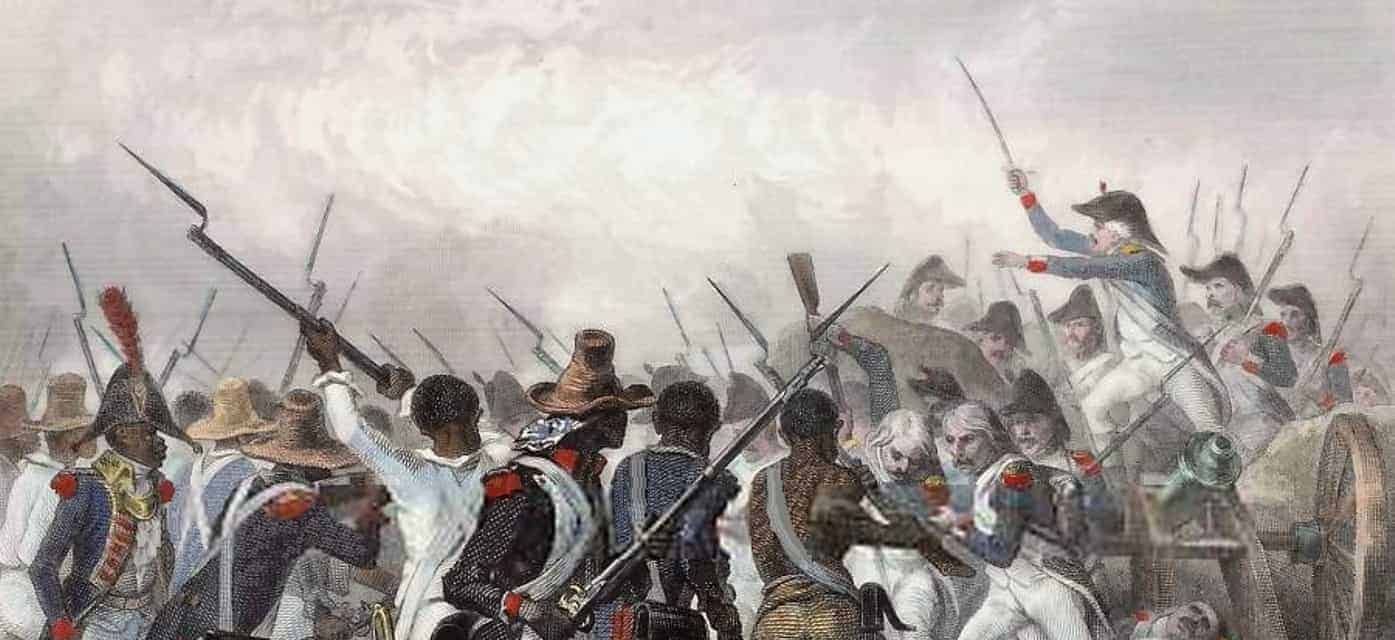From 1791 to 1804, the French colony of Saint Domingue, today’s Haiti, saw a multisided and violent struggle for power between its slaves, white colonists, freedmen, mulattos, as well as the French, British, and Spanish governments. In what came to be known as the Haitian Revolution, the various parties often combined with, before turning against each other in a bewildering kaleidoscope of shifting alliances. By the time the dust had settled in 1804, the Haitian people had secured their independence, and Haiti became the first country founded by slaves who successfully fought to free themselves from their shackles.
Following are ten events from the bloody history of the Haitian Revolution.
Slavery in Haiti
Slavery was introduced in Hispaniola, the island encompassing today’s Haiti and the Dominican Republic, soon after the Spanish arrived in 1492. The natives were forced by their European conquerors to mine for gold, and the between the brutal working conditions and Old World diseases, they were all but wiped out. Within a century, the indigenous peoples of Haiti had been virtually exterminated.
By then, however, the island’s gold mines had been exhausted, and the Spanish, who had discovered far richer mines in South and Central America, lost interest in Haiti. In the 17th century, Spanish control waned, as settlers increasingly ignored official policies and went their own way. Spain’s efforts to reassert its control backfired, and before long, much of the island had become a haven for pirates.
In 1697, the frustrated Spanish ceded the western part of Hispaniola – today’s Haiti – to France. The French, who named their new possession Saint Domingue, transformed it into a highly lucrative colony, with a labor-intensive sugar based economy that relied on the labor of vast numbers of African slaves. Haiti became the ultimate sugar island, and the imperial engine of French economic growth.
That came at a high price for the slaves, however, whose working conditions were horrendous and deadly. The slaves’ life expectancy was abysmally brief, routinely cut short by backbreaking toil, workplace injuries, tropical diseases, starvation, mistreatment, or outright murder by their masters. However, the slaves were expendable assets: a slave only had to live and toil for two years in order to recoup the cost of his purchase and upkeep, and turn his owner a tidy profit as well.

With such brutal economic realities, and the fact that replacement slaves were readily available and relatively cheap, plantation owners often had financial incentives to work their slaves to death. The slave population grew, but unlike Britain’s North American colonies, Haiti’s growth did not result from natural increase, but from the purchase of ever more slaves to replace those who had perished. By the 1780s, Haiti accounted for a third of the entire Atlantic slave trade, as the settlers were in constant need of new slaves to replace those worked to death on their plantations.
The colony’s system of brutal slavery could only be maintained by brutal methods of compulsion. Especially in the light of the numerical disparity between slaves and whites, which reached 17:1 on the eve of the Haitian Revolution. In theory, slavery was subject to the Code Noir – laws according the slaves some basic rights, while authorizing their masters to use corporal punishments to enforce compliance. In practice, the masters were free to do with their slaves as they would, and Haiti’s slaves were routinely subjected to unrestricted and sadistic levels of violence. By the late 1780s, Haiti was a powder keg waiting for a spark.

